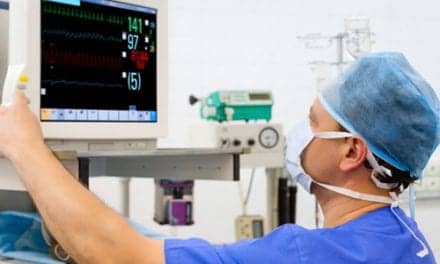RT Magazine discusses recent advances in humidification technology with Hal Norris, founder of ARC Medical.
The respiratory device market worldwide continues to grow, largely due to the aging population and the increasing incidence of COPD. This includes the humidification market, whose technology is frequently evolving to maximize patient outcomes and respond to varying patient needs.
To learn more about the latest advances in humidification technology and how clinicians can maximize the value of their devices, RT Magazine spoke with Hal Norris, founder and owner of ARC Medical Inc. Norris discussed the development of user-friendly products and equipment for patients as well as the trends that may drive humidification technology in the future.
RT: What are some of the newest advances in humidification technology, both in the field and at your company?
Hal Norris (ARC Medical): Many of the recent advances have come in the area of heated humidification (HH). However, even with these advances, there are still hundreds of malfunctions reported annually to the FDA for these devices (see product code BTT on Manufacturer and User Facility Device Experience [MAUDE] database for adverse events).
Heat and Moisture Exchanger (HME) devices (MAUDE product codes CAH and BYD) may also be the cause of malfunctions, but most FDA reported malfunctions occur from the selection of the wrong HME for the patient. A Class 1 HME that provides the patient with >30 mg H2O/L air and 30°C at 20 L/min ventilation has not been shown to have malfunctions typically associated with HME devices or heated humidifiers (such as endotracheal tube occlusion or pneumothorax).
RT: Healthcare costs continue to rise. As facilities replace older devices with new equipment, how can your company help them maximize value while mitigating the financial burden?
Norris: ThermoFlo is a less expensive yet a more physiological and therapeutic humidifier. There has never been an ET tube occlusion or a pneumothorax reported in 25 years and millions of ventilator patient days in which our device was used from intubation to extubation.
RT: Easier to use devices can support clinicians and also increase patient compliance. How is your company making humidifiers more user-friendly?
Norris: Nothing is simpler to use than ThermoFlo. Simply change once per day. While this requires breaking the circuit, the data on breaking the circuit to reduce VAP was done in the 1990s on non-heated wire circuits. There has never been a study to show that breaking the dry circuit using an HME increases VAP rates.
RT: What impact can proper humidification have on preventing ventilator-associated pneumonia and how are your products designed to help clinicians fight VAP? Is there an advantage for one type (active vs. passive) over another, in regard to preventing VAP?
Norris: When looking at the data (see the Web site below), HME devices and heated wire circuits have similar VAP rates. This is due to the absence of condensate in HME circuits and the reduced condensate in heated wire circuits. See above about breaking the circuit.
RT: Looking ahead, how much will humidification technology evolve in the next 5 years and what trends do you believe will drive these changes/advances?
Norris: As hospitals look for cost-effective patient therapeutics, Class 1 HME and HMEF (heat moisture exchanger with filter) devices will continue to grow. Our devices not only replace the humidification lost by the ET tube, but also replace the natural resistance to flow provided by the nose in the non-intubated patient. Go to www.humidityfactsandfallacies.com for a comprehensive review of the Clinical Practice Guidelines (CPG) on humidification.
For further information, contact [email protected].











In my opinion, HMEF or HME should precisely be qualified the used period.